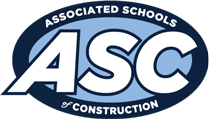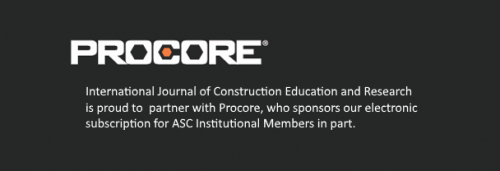MANUSCRIPT SPECIFICATIONS
APA Style Guide:
- Where the ASC Style Guide does not provide guidance, manuscripts should conform to the Publication Manual of the American Psychological Association, 7th Edition (October 2019).
- Manuscripts also must conform to the guidelines for avoiding ethnic biases and sexist language.
Paper and Layout:
- Paper size will be – letter – 8½ in. x 11 in.
- Page orientation is to be portrait.
- “Layout – section start” is set to “new page” and “vertical alignment” is to be “top”.
Margins:
- All margins are to be set at one inch (1″).
- The gutter is set at zero inches (0″).
- The header and footer are set at one-half inch (.5″).
Font:
- Font size is 12 pt., Times New Roman.
- Limit character enhancement to: bold, underline, italics, superscript, and subscript.
- Color is not encouraged.
- Color may only be used if the author arranges to do so and pays the additional publishing costs to the publisher.
Paragraph: (Example)
- Each paragraph is single spaced, aligned left only, no indents.
- There is only one (1) hard return between paragraphs.
Journal Paper Length: (NEW)
- Manuscripts shall not exceed 20-pages in length, including appendices.
- Authors of longer manuscripts seeking a waiver of this specification may request a review for waiver by sending their request to asc.journal@byu.edu or asc-ijcer@colostate.edu.
- Such waivers will be given at the editor’s discretion.
DO NOT INCLUDE IN MANUSCRIPT
Text Styles:
- Do not use any preformatted text style. (i.e., Heading 1, Body Text)
Tabs:
- Do not use tabs to indent text anywhere within the document.
- Do not use tabs to build tables.
- Use the table options of your text editor.
- You may use the increase indent or decrease indent button of your text editor.
Bibliography:
- It is not recommended to include works for further reading.
Footnotes or Comments:
- Do not use footnotes or comments within manuscript.
- (Citations are to be placed within the text and not at the bottom of the page.)
Headers And Footers:
- No headers or footers are to be placed in the document.
Abstract: (Example)
- Do not include the word “Abstract” above the abstract paragraph.
Language:
- Language should remain non-gender specific unless germane to the content.
- Do not use “he/she”, “he or she” or like wordings.
- Example:
- replacing . . . “men” at the jobsite . . . With . . . “workers” at the jobsite . . .;
- replacing . . . Information to a superintendent for “her” . . . With . . . Information to a superintendents for” their,” etc.
Page Numbers:
- Do not include page numbers in the document.
Section Breaks:
- Do not include section or page breaks in the document.
Special Formats:
- Do not include date and time stamps, auto text, fields, captions, cross-references, or indexes in the document.
BODY OF MANUSCRIPT:
Title: (Example)
- The title is one 18 pt. space from the top of the first page.
- Title font size will be 18 pt., Times New Roman, bold, centered, and upper and lower case (Title Case).
- The title summarizes the main idea of the manuscript, short, and descriptive of the contents.
- No hard returns are to be within the title.
Author’s Table: (Example)
- Author information will be formatted within a single table, one aligned left 12 pt. hard return between the title and the author table.
- The table size is established by setting the table’s width to 100%” and alignment to “centered”.
- Borders and shading must be set to “none.”
- Authors from the same institution are placed within the same cell, joined by the word “and.”
- The number of cells will depend upon the number of authors from differing institutions.
- No table will be over two cells wide, but may contain multiple rows.
- The first line is (bold) and contains the author’s first name, middle initial, and surname followed by their degree i.e., Ph.D., MSCS and certifications and licenses i.e., CPC, PE.
- The second line (not bold) is their institutional affiliation.
- The third line (not bold) is their institution’s city and state.
Abstract and Key Words: (Example)
- Do not include the heading “Abstract.”
- The abstract will be formatted within a single table, one aligned left 12 pt. return between the author table and the abstract table.
- The table size is established by setting the table’s width to 100%” and alignment to “centered”.
- The text within the table is justified left and right and is indented one-half inch from both side margins.
- Borders and shading must be set to “none.”
- Font is 10 pt., Times New Roman, and is limited to one paragraph under 200 words.
- No hard returns are to be included within the abstract.
- The key words are to be included within the abstract table one hard return below the abstract.
- Provide no more than five key reference words.
- Bold only the text “Key Words:”.
1st Level Headings: (Example)
- Font size is 12 pt., Times New Roman, and bold.
- Headings are centered, upper and lower case (Title Case).
- Two (2) hard returns before the heading and one (1) hard return after the heading.
2nd Level Headings: (Example)
- Font size is 12 pt., Times New Roman.
- Headings are centered, italicized, uppercase and lowercase heading, 1 line space before, and 1 line space after.
3rd Level Headings: (Example)
- Font size is 12 pt., Times New Roman.
- Headings are flush left, italicized, uppercase and lowercase side heading, 1 line space before, and 1 line space after.
4th Level Headings: (Example)
- Font size is 12 pt., Times New Roman and are flush left, italicized, lowercase paragraph heading ending with a period (.),
- 1 line space before, 3 character spaces after, paragraph begins same line.
Citations: (Example)
- Citations are within parenthesis, place (author’s surname and publication year) within the text at the appropriate point.
- All citations must refer to sources listed in the references, and all sources listed must be cited from within the text.
- See the references examples (under the support material section of the manuscript specifications) for proper listing of sources.
Tables & Figures: should not be embedded in the text, but should be included as separate files.
Tables: (Example)
- Textual information presented in column and row format.
- All tables must be created using the table function within the same word processing system as the manuscript.
- No table may be included as an image file or inserted as a reference to another file document, i.e. Excel, Access.
- The table size is established by setting the table’s width to 100%” and alignment to “centered”.
- Table titles (use 12 pt.) Appear at top of table (note punctuation, capitalization, and formatting displayed by the examples) and within its own row cell.
- Borders and shading must be set to “none” except the title cell, header cells, and the last cell which should have the bottom cell boundary as a 1/2 pt. line.
- Column headings can be bold.
- Information within the table (except for the title cell) is to be formatted font size 10 pt., times roman.
- There should be a hard return before and after the table.
- Tables in excess of 40 lines in total will be included as an appendix.
Figures: (Example)
- Figures include non-text entries such as graphs, illustrations, photos, and artwork (tables are not figures).
- Figures should be drawn using a suitable drawing package and submitted as separate files.
- The use of color is not encouraged.
- Color may only be used if the author arranges to do so and pays the additional publishing costs to the publisher.
- Only .gif and .jpg file formats are considered acceptable.
- Submitted images should adhere to the resolution setting of 300 dpi.
- A two (2) celled table contains the figures (center justified) and figure title (left justified).
- Figures will not have borders drawn around them and should be limited to two-thirds (⅔’s) of a page.
- The table size is established by setting the table’s width to 100%” and alignment to “centered”.
- Figure titles appear in the bottom cell of the figure table (note punctuation, capitalization and formatting displayed by the examples).
- Do not include the figure title in the figure itself.
Illustrations:
- Illustrations submitted (line drawings, halftones, photos, photmicrographs, etc.) should be digital files.
- Digital files are recommended for the highest quality reproduction and should follow these guidelines:
- 300 dpi or higher
- sized to fit on journal page
- EPS, TIFF, or PSD format only
Color Reproduction:
- Color illustrations will be considered for publication; however, the author will be required to bear the full cost involved in color art reproduction.
Bullets And Numbering: (Example)
- Items listed should be syntactically and conceptually parallel to the other items in the list and should be limited to itemized conclusions or steps in a procedure.
- Only minimal round bullets or Arabic numerals are to be used.
- The list is one space below the previous paragraph and indented 0.25″ and is followed by one left justified space.
- Each of the separate items in the series is followed by a comma or period.
- Do not force or hard text your own bullets or numbering using tabs or indents.
- Use auto formatted only.
- You may format them to your specific needs.
SUPPORT MATERIAL FOR MANUSCRIPT:
References: (Example)
- Alphabetical listing of sources that were used in the research and preparation of paper.
- Manuscripts should conform to the Publication Manual of the American Psychological Association, 5th Edition (2001).
- References should be indicated in the manuscript by giving the author’s name, with the year of publication in parentheses, e. g. Jones (2004) or (Jones, 2004) as appropriate.
- If several publications are cited by the same author and from the same year, a, b, c, etc. should be put after the year of publication.
- All references cited in the text should be listed in full at the end of the paper.
- The use of lengthy explanatory footnotes should be kept to a minimum.
Appendix: (Example)
- Appendices are labeled A, B, and C (when there is more than one), and are placed in the order they are first referenced in the text.
- Please limit number of pages.
- Information within the appendix is to be formatted font size 10 pt., Times New Roman.



